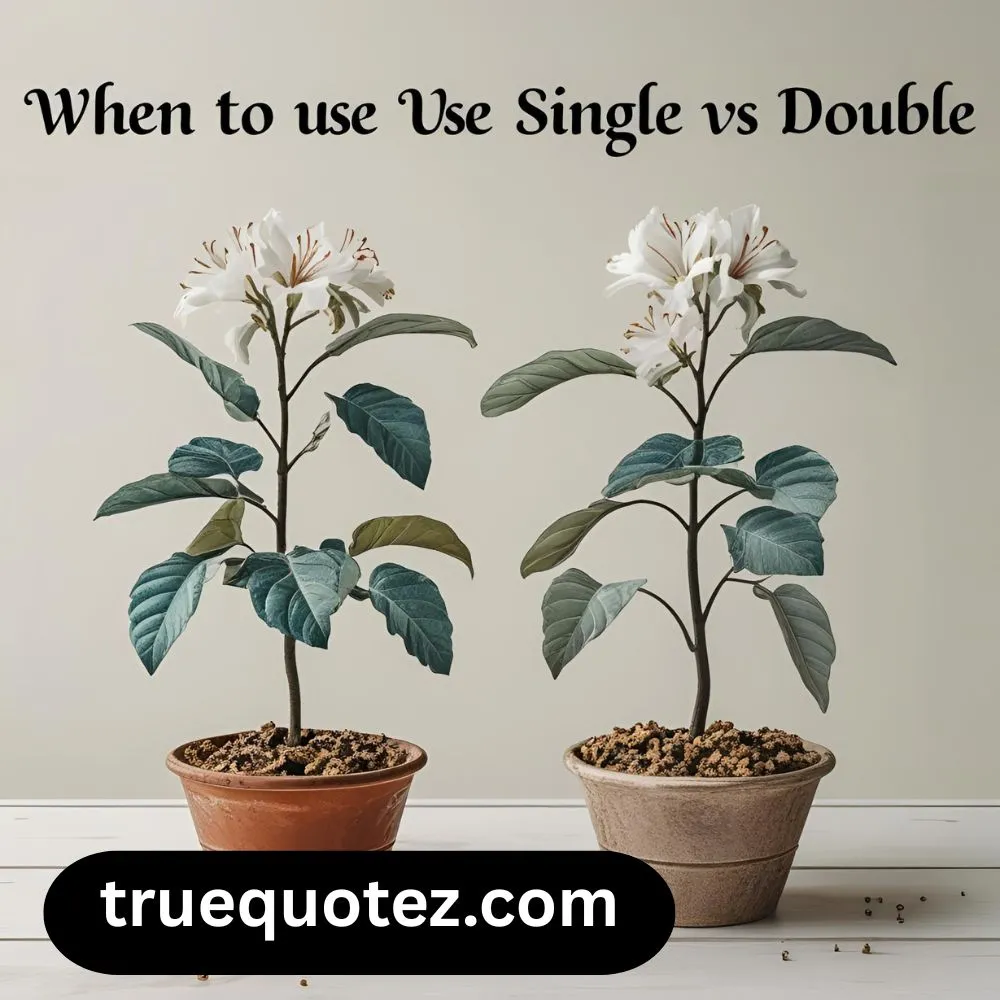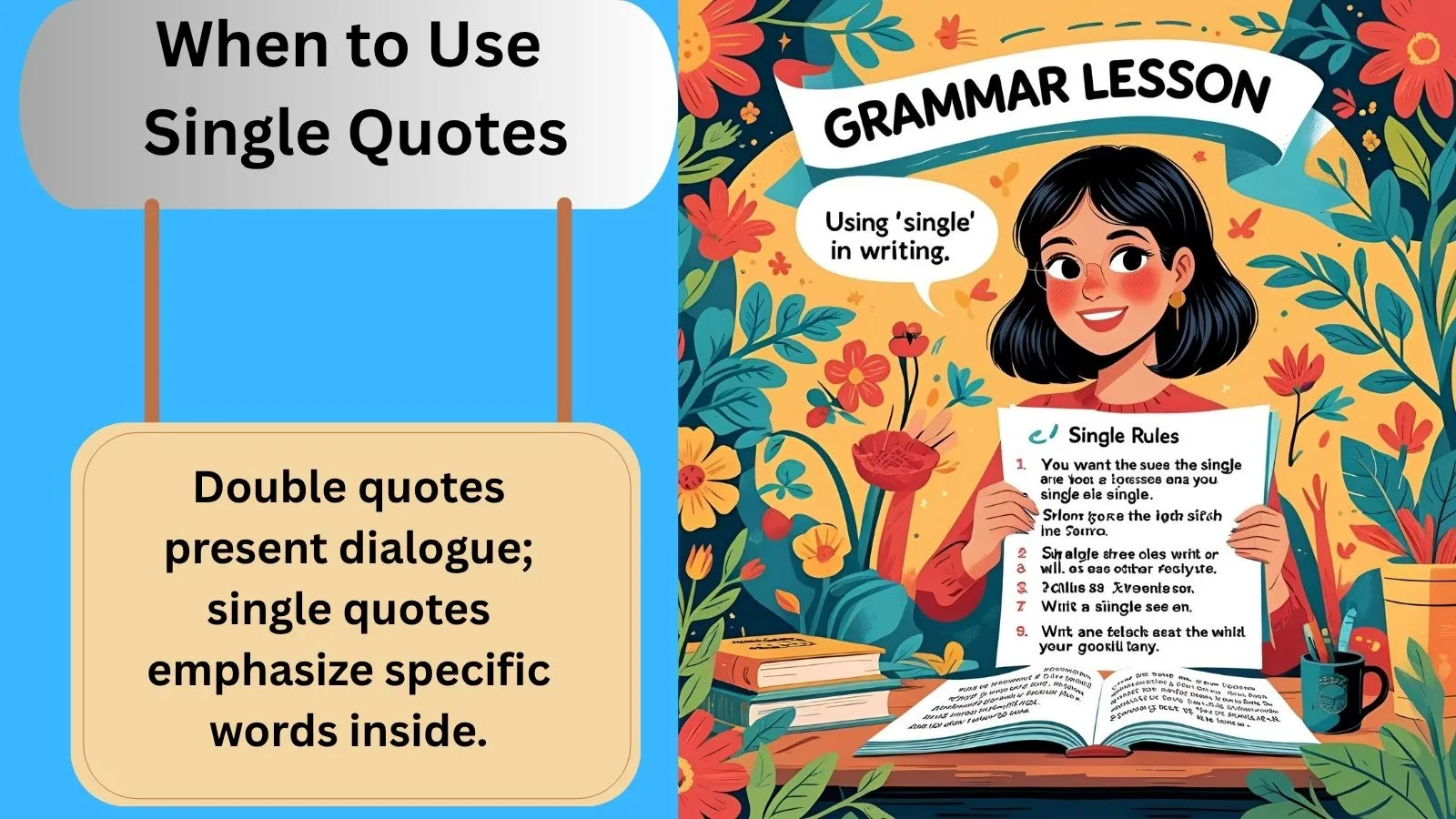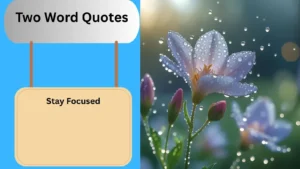Understanding when to use single quotes can be confusing, especially when mixed with double quotes in writing.
If you’re drafting an article, coding, or simply texting, knowing the correct use of single quotes will make your writing clearer and more professional.
This guide breaks down the specific situations where single quotes are appropriate and how they differ from double quotes.
With clear examples, tips, and real-world scenarios, you’ll gain confidence in applying single quotes correctly.
Let’s dive in!
When to Use Single Quotes vs Double Quotes

- ✨ Single quotes highlight a quote within a quote.
- ✨ Use double quotes for direct speech.
- ✨ She said, ‘He called me “amazing” today.’
- ✨ Double quotes present dialogue; single quotes emphasize specific words inside.
- ✨ News headlines often use single quotes for quotes.
- ✨ Double quotes for full quotations; single for nested quotes.
- ✨ In British English, single quotes are more common for speech.
- ✨ American English prefers double quotes for dialogue.
- ✨ Quotes within headlines use single quotes: ‘Market Hits “Record High” Today.’
- ✨ Use double quotes for titles of articles.
- ✨ Use single quotes for special emphasis or irony.
- ✨ Double quotes highlight exact spoken words.
- ✨ Single quotes are sometimes used for unfamiliar terms.
- ✨ Double quotes can introduce definitions.
- ✨ Always match opening and closing punctuation correctly.
When to Use Single Quotes vs Double

- 📚 Use double quotes for quoting someone’s words directly.
- 📚 Use single quotes to highlight words within that quote.
- 📚 British English often starts with single quotes.
- 📚 American English starts with double quotes.
- 📚 She said, ‘The book was titled “The Art of War.”’
- 📚 Headlines prefer single quotes for internal quotes.
- 📚 Technical writing may use single quotes for code elements.
- 📚 Double quotes identify speech and conversation.
- 📚 Use single quotes when referring to words as words.
- 📚 For example: The word ‘honesty’ is powerful.
- 📚 Use double quotes for exact phrases.
- 📚 Single quotes can express sarcasm or irony.
- 📚 Academic writing often uses double quotes for citations.
- 📚 Single quotes are rare in formal American writing.
- 📚 Choose consistently depending on your style guide.
When to Use Single Quotes Versus Double Quotes

- 📝 Use single quotes inside double quotes.
- 📝 Double quotes for full sentences someone said.
- 📝 Journalists often use single quotes in headlines.
- 📝 British English prefers single quotes.
- 📝 Use single quotes for internal thoughts inside dialogue.
- 📝 Double quotes for movies, songs, and article titles.
- 📝 Single quotes for translations or alternative meanings.
- 📝 Use double quotes for direct citations.
- 📝 She whispered, ‘He said “don’t worry” yesterday.’
- 📝 Single quotes for specialized terms or jargon.
- 📝 Double quotes are standard in American English.
- 📝 Single quotes sometimes imply skepticism or debate.
- 📝 Double quotes for customer testimonials.
- 📝 Single quotes highlight definitions within explanatory text.
- 📝 Be consistent within your document.
When to Use Single Quotes Around a Word
- 🔍 Use single quotes to highlight specific terms.
- 🔍 To show irony or sarcasm around a word.
- 🔍 When introducing unfamiliar terminology.
- 🔍 To mark words being discussed as words.
- 🔍 Example: The term ‘blockchain’ is widely used.
- 🔍 To emphasize irony: He’s a ‘genius,’ clearly.
- 🔍 For translations: ‘Amor’ means love.
- 🔍 When citing nicknames: He is known as ‘The Boss.’
- 🔍 To highlight titles within headlines.
- 🔍 To stress debated or controversial terms.
- 🔍 Academic discussions often highlight terms in single quotes.
- 🔍 Use sparingly to avoid overuse.
- 🔍 Avoid using single quotes for regular emphasis.
- 🔍 Single quotes can replace italics in casual writing.
- 🔍 Use them in captions to call out terms.
When to Use Single Quotes or Double Quotes
- 🔤 Double quotes for direct dialogue.
- 🔤 Single quotes within nested dialogue.
- 🔤 Double quotes for titles of works.
- 🔤 Single quotes in British headline styles.
- 🔤 Double quotes for speech in fiction.
- 🔤 Single quotes for isolated words or terms.
- 🔤 Use double quotes for full citations.
- 🔤 Single quotes for sarcasm.
- 🔤 Double quotes for commands or instructions.
- 🔤 Single quotes for ironic or debated words.
- 🔤 Double quotes for policy statements.
- 🔤 Single quotes inside headlines: ‘Company “shocked” by results.’
- 🔤 Double quotes for personal testimonies.
- 🔤 Single quotes to mark unique nicknames.
- 🔤 Maintain consistency according to your writing style guide.
When to Use Single Quotes and Double Quotes
- 📖 Double quotes start conversations.
- 📖 Single quotes enclose quotes inside dialogue.
- 📖 Journalists often prefer single quotes for headlines.
- 📖 Single quotes emphasize unfamiliar terms.
- 📖 Double quotes highlight exact phrases.
- 📖 Single quotes are less common in U.S. formal writing.
- 📖 Use double quotes for book, movie, and article titles.
- 📖 Single quotes around ironic terms.
- 📖 Double quotes for academic references.
- 📖 Single quotes when referring to a word itself.
- 📖 Example: The word ‘integrity’ holds weight.
- 📖 Double quotes to introduce definitions.
- 📖 Single quotes for nicknames or monikers.
- 📖 Use double quotes for direct customer feedback.
- 📖 Stay consistent with your choice.
When to Use Single Quotes Instead of Double
- 🎯 In British English for dialogue.
- 🎯 When quoting inside another quote.
- 🎯 Headlines often use single quotes.
- 🎯 To highlight words as words.
- 🎯 For sarcasm or irony.
- 🎯 Inside programming for specific string formats.
- 🎯 To mark translations or alternate meanings.
- 🎯 To quote titles within titles.
- 🎯 When space is tight in publishing.
- 🎯 For specialized or debated terms.
- 🎯 To label nicknames.
- 🎯 When distinguishing a term in informal writing.
- 🎯 Single quotes can act like italics for casual emphasis.
- 🎯 Avoid mixing unless required.
- 🎯 Follow your style guide for consistency.
When to Use Single Quotes in a Sentence
- 🖊️ She said, ‘This is “perfect.”’
- 🖊️ Use for inner quotes within dialogue.
- 🖊️ To highlight specific terms: The term ‘pivot’ is overused.
- 🖊️ When introducing foreign words: ‘Bonjour’ means hello.
- 🖊️ To show sarcasm: He is ‘the best’ driver.
- 🖊️ To emphasize nicknames: Meet ‘The Hammer.’
- 🖊️ Academic papers sometimes use single quotes for terms.
- 🖊️ Headlines often rely on single quotes.
- 🖊️ In definitions: The word ‘karma’ is complex.
- 🖊️ British dialogue starts with single quotes.
- 🖊️ Use sparingly in formal business writing.
- 🖊️ To separate special terms from regular text.
- 🖊️ Inside code comments or technical writing.
- 🖊️ Avoid unnecessary overuse for emphasis.
- 🖊️ Only for specific situations, not general emphasis.
Conclusion
Mastering when to use single quotes simplifies your writing, enhances clarity, and ensures your message is understood as intended.
If following British or American standards, consistency is key. Use single quotes for nested quotations, specific terms, irony, or headlines, and double quotes for direct speech and titles.
By applying these simple rules, your writing will look polished, professional, and grammatically sound.


